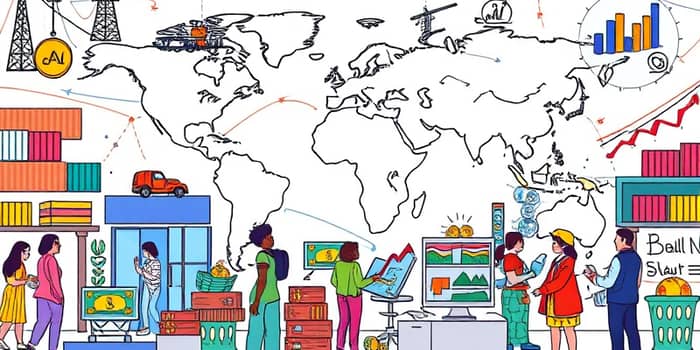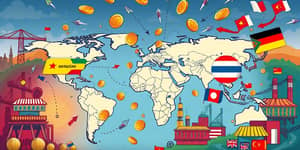The global economy encompasses the intricate economic interactions occurring among nations, institutions, and individuals around the globe. As borders blur in terms of trade, investment, and finance, understanding this complex web of exchanges has become increasingly essential.
The world’s economies are more interconnected than ever, creating both opportunities and challenges that reverberate through every aspect of life.
This article explores the fundamental concepts of the global economy, tracing its historical development and identifying key forces shaping its current landscape.
From globalization and trade to technological advancements and financial systems, each of these elements influences economic interactions and livelihoods.
Ultimately, a thorough understanding of the global economy allows individuals and businesses to navigate the myriad factors affecting trade, investments, and economic stability.
The insights gained can help people make informed decisions in an increasingly interconnected world.
What is the Global Economy?
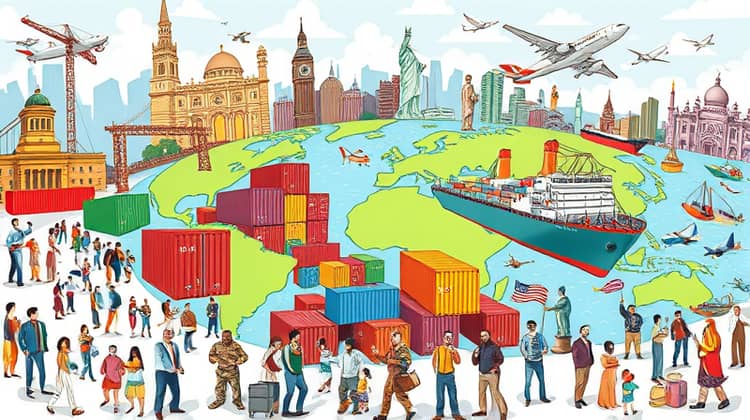
The global economy refers to the interconnected economic activities and interactions that transcend national boundaries. It involves the flow of goods, services, capital, and labor across countries, impacting markets worldwide.
Through the lens of the global economy, we can observe how different nations depend on each other for resources, technology, and markets.
In today's world, the global economy is characterized by free trade agreements, multinational corporations, and international supply chains.
These elements contribute to both economic growth and competition among nations, as they seek to enhance their positions in the global marketplace.
Understanding the global economy is crucial not only for economists but also for policymakers, businesses, and individuals who are affected by the fluctuations and changes that happen on an international scale.
Historical Development of the Global Economy
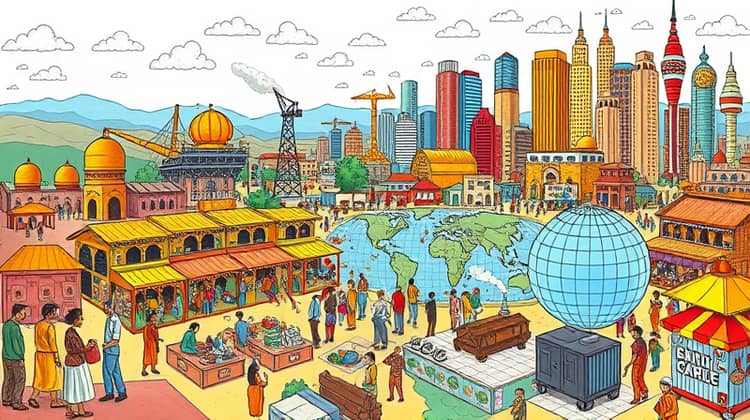
The evolution of the global economy can be traced back centuries, beginning with early trade routes such as the Silk Road. However, significant milestones include the Age of Exploration, the Industrial Revolution, and the rise of capitalism, which have vastly transformed how economies interact.
Modern globalization has accelerated these changes, leading to the extensive integration and interdependence we witness today.
- Ancient trade routes - Exchange of goods, ideas, and cultures among civilizations.
- The Age of Exploration - Expansion of trade networks and colonization.
- The Industrial Revolution - Advancement in manufacturing and global commerce.
- The rise of capitalism - Growth of market economies and consumerism.
- Globalization - Rapid technology advancements and the interconnectedness of economies.
Key Forces Shaping the Global Economy
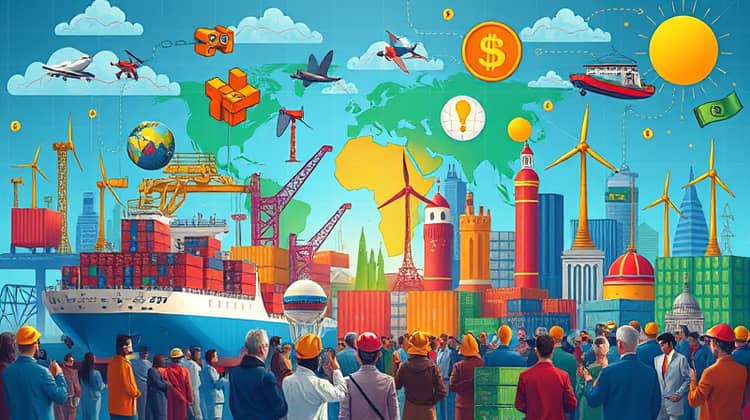
Several forces play a vital role in influencing the landscape of the global economy. Understanding these key factors allows us to comprehend how they affect markets and economic structures worldwide.
It is important to examine these forces collectively to appreciate their impact on economies and societies.
They encompass trade dynamics, technological advancements, financial systems, policy decisions, demographic changes, and environmental considerations.
Each of these components interlinks with the others, creating an intricate framework that shapes economic realities.
1. Global Trade
Global trade refers to the exchange of goods and services across international borders.
This phenomenon has been a cornerstone of economic interaction, with trade networks expanding rapidly in recent decades due to technological advancements and globalization.
Key benefits of global trade include access to a wider variety of goods and services, enhanced consumer choice, and increased efficiency in production through specialization.
Countries can leverage their comparative advantages, leading to economic growth and improved standards of living.
However, global trade also comes with challenges, such as increased competition, the potential for job displacement in certain industries, and the need for regulatory frameworks to ensure fair practices.
Trade agreements such as NAFTA and the European Union exemplify efforts to reduce barriers and create a more interconnected trading environment.
These agreements can stimulate economies but may also provoke political and social tensions.
Ultimately, global trade is a driving force of the global economy, fostering interdependence among nations and shaping diplomatic relationships. It requires careful management to balance its benefits and drawbacks.
- Increased consumer choice
- Access to wider markets
- Increased efficiency and specialization
- Economic growth opportunities
- Job displacement concerns
2. Technology and Innovation
Technology and innovation are pivotal in shaping the global economy. They drive productivity, enhance efficiency, and create new markets and industries.
The rapid pace of technological advancement has redefined traditional industries while creating entirely new sectors.
Technological breakthroughs such as the internet, automation, and artificial intelligence have not only transformed communication and manufacturing but also altered supply chain dynamics and consumer behavior.
The ability to access information and engage in e-commerce has restructured global trade patterns.
Moreover, innovation spurs economic growth as countries invest in research and development to gain competitive advantages. Technology adoption can lead to increased productivity and economic outputs, reinforcing the success of nations in the global marketplace.
3. Financial Markets
Financial markets serve as the backbone of the global economy, facilitating the flow of capital and investment across borders.
They provide mechanisms for businesses and governments to raise funds and invest in growth opportunities, shaping economic landscapes.
Healthy financial markets enable efficient allocation of resources, reducing risks and enabling a conducive environment for entrepreneurship and innovation.
They also bring challenges such as volatility, speculation, and potential crises, which can have far-reaching impacts worldwide.
Furthermore, the interconnected nature of financial markets means that events in one region can have cascading effects on economies globally.
This underscores the importance of stability and robust regulatory frameworks to minimize potential disruptions.
- Capital flow across borders
- Investment opportunities
- Resource allocation efficiency
- Economic growth facilitation
- Market volatility risks
4. Political and Economic Policies
Political and economic policies significantly influence the functioning of the global economy. Governments create regulatory frameworks that shape trade, investment, and economic interactions.
These policies can either promote or hinder economic growth depending on their design and implementation.
Moreover, international relations and geopolitical tensions can impact global markets and trade agreements. Policy decisions made by influential economies, such as the U.S. and China, resonate globally, creating ripple effects that affect nations far beyond their borders.
- Trade regulation policies
- Tariffs and taxes
- Foreign investment rules
- Bilateral and multilateral agreements
- Economic sanctions and embargoes
5. Demographics
Demographic shifts, including population growth, aging populations, and urbanization, have profound implications for the global economy.
Understanding demographic trends allows for better forecasting and planning in both business and governmental contexts. As population dynamics evolve, so do labor markets, consumer preferences, and economic demand.
For instance, younger populations in developing countries present opportunities for economic expansion and labor supply, while aging populations in developed nations pose challenges for labor availability and healthcare systems.
- Population growth rates
- Aging population trends
- Urbanization and migration patterns
- Changes in consumer preferences
- Labor market dynamics
6. Environmental Concerns
Environmental concerns are increasingly playing a crucial role in shaping the global economy. Climate change, resource depletion, and pollution are issues that transcend borders and require collective action and sustainable practices.
The impact of these concerns on economies can be profound, influencing resource availability, regulatory frameworks, and public sentiment.
Innovations in sustainability practices, such as renewable energy and environmentally friendly technologies, are emerging as competitive advantages for nations and companies.
The push for green economies is driving investments toward sustainable solutions and processes, redefining traditional economic models.
The Impact of the Global Economy on Everyday Life
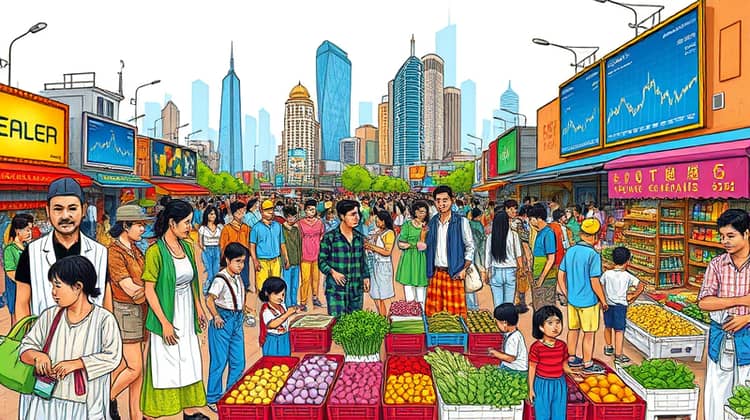
The global economy significantly impacts everyday life, shaping job opportunities, consumer choices, and living standards. As markets fluctuate and policies change, individuals and communities feel the consequences of these economic dynamics in tangible ways.
- Job availability in various sectors
- Consumer goods and service prices
- Access to international markets and products
- Living standards influenced by economic conditions
- Impact of global events on local economies
Current Trends and Future Outlook

Presently, trends such as digital transformation, sustainability efforts, and shifting geopolitical dynamics define the global economy.
Understanding these trends is vital for stakeholders seeking to navigate the complexities of international markets.
- Digital economy growth
- Sustainability as a competitive edge
- Shifts toward regional trade agreements
- Impact of automation and AI on labor markets
- Geopolitical tensions affecting trade dynamics
Looking forward, the global economy faces challenges, including the need for sustainable practices and inclusive growth.
Addressing these issues while capitalizing on emerging opportunities requires collaboration and adaptability among countries, businesses, and individuals.
The interconnectedness of the global economy signifies that the decisions made today will set the course for future generations, necessitating a proactive approach to ensure economic resilience and sustainability.

